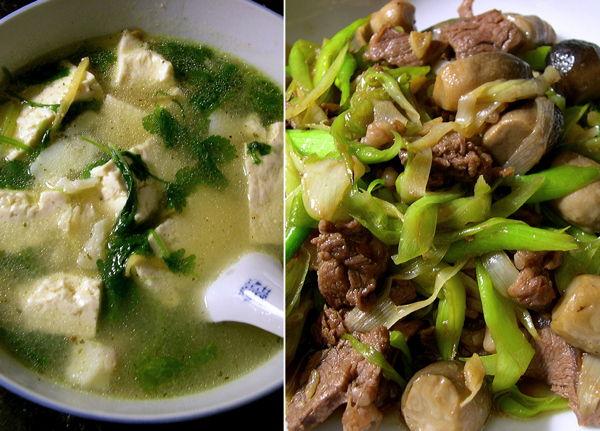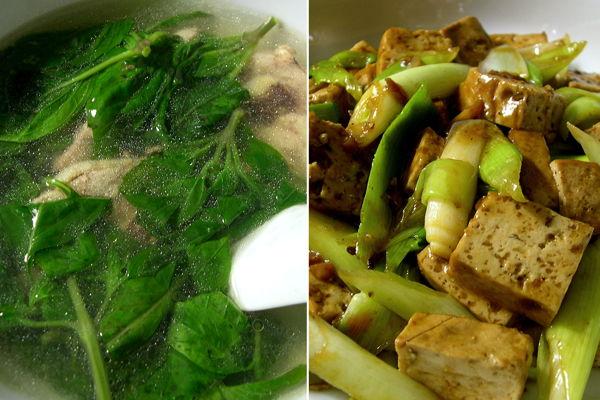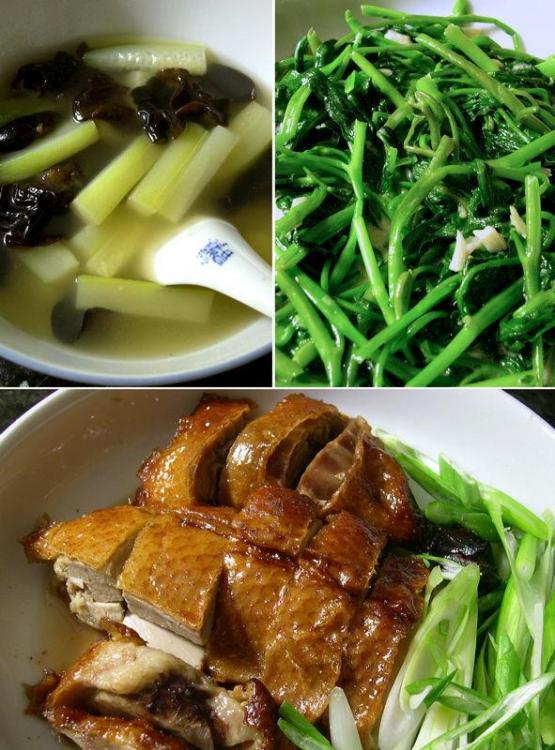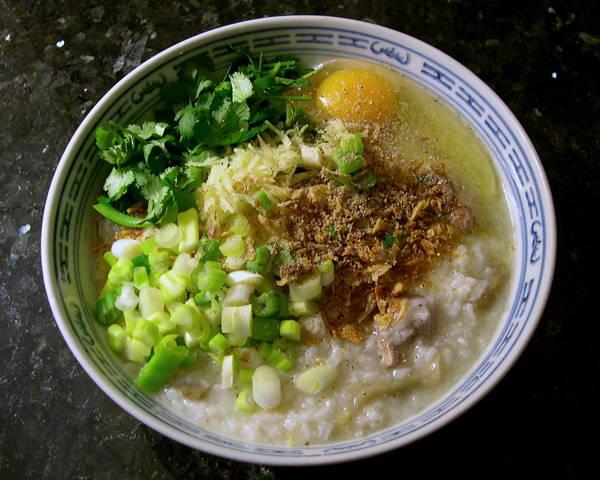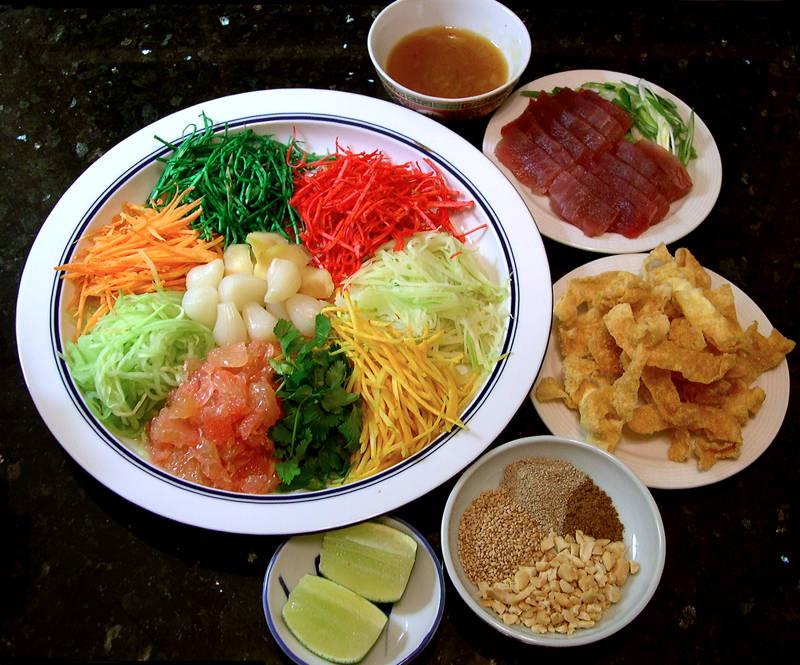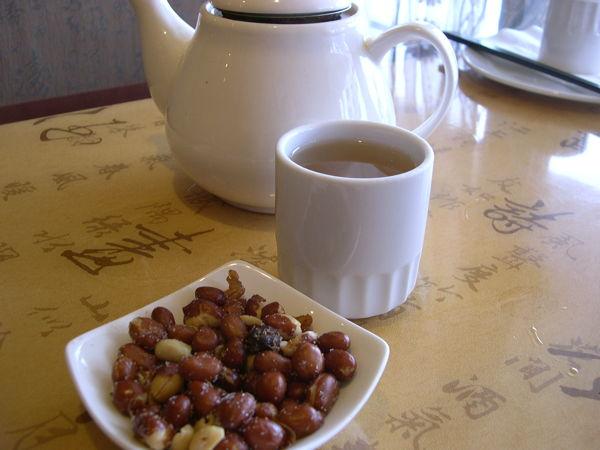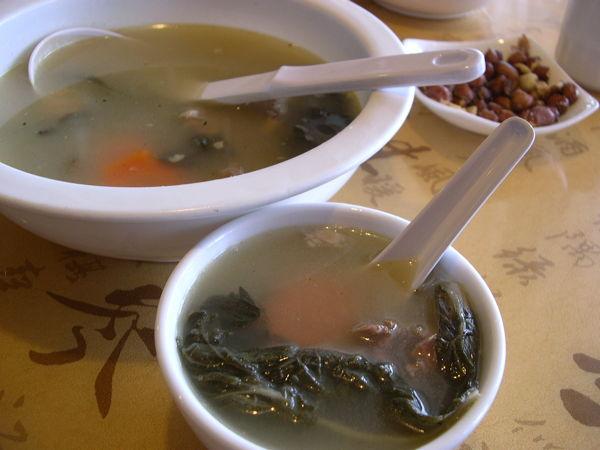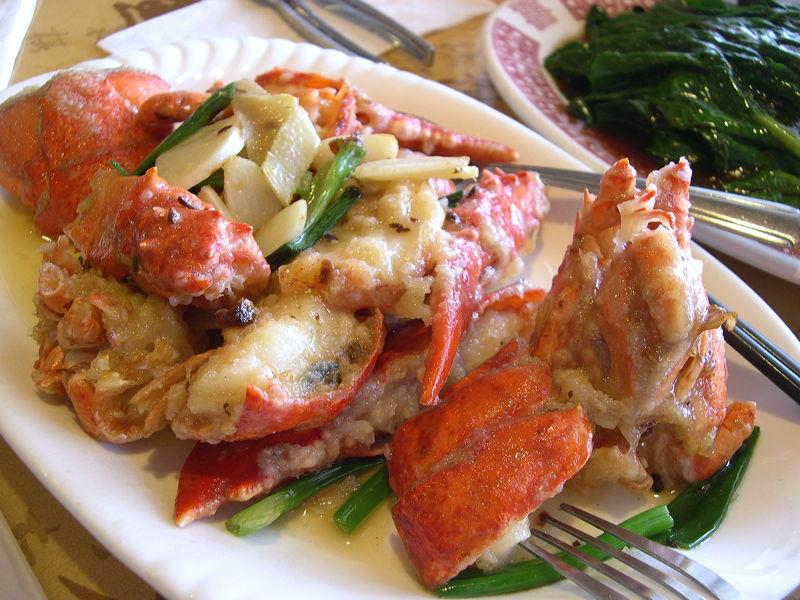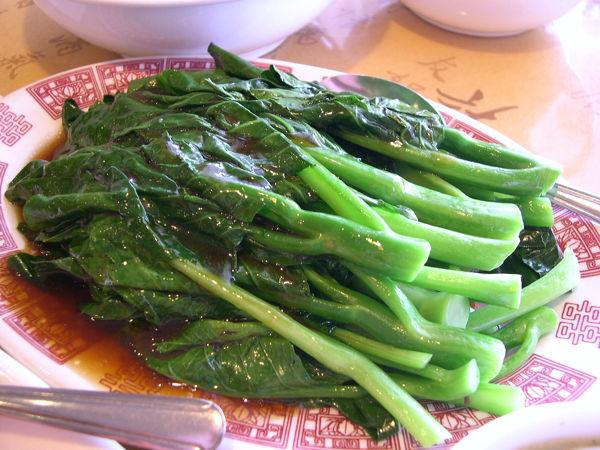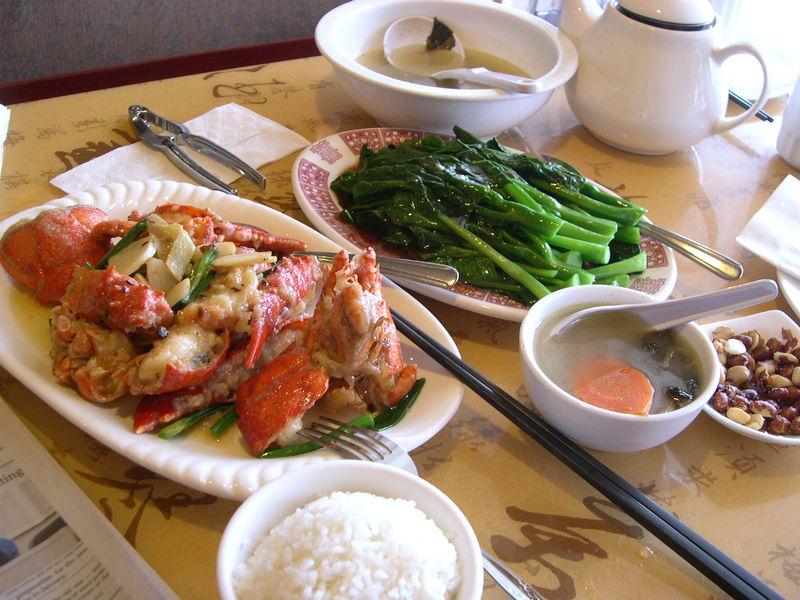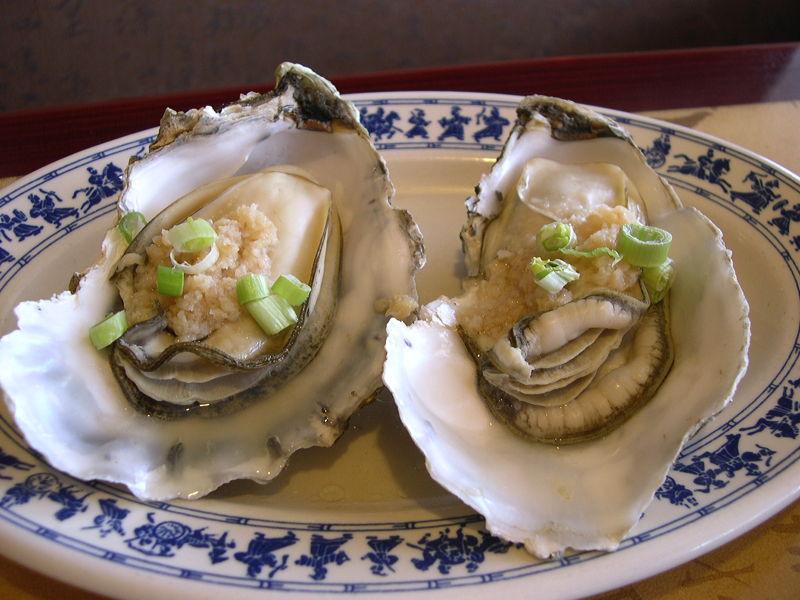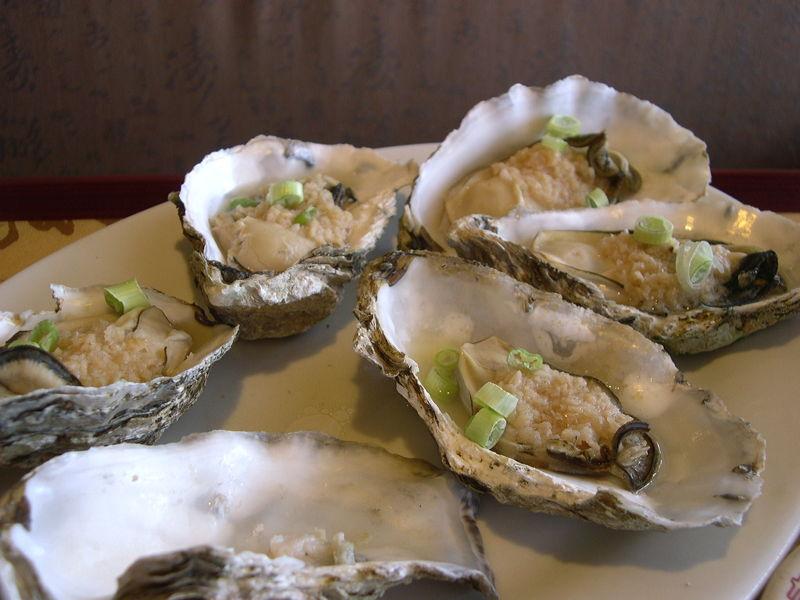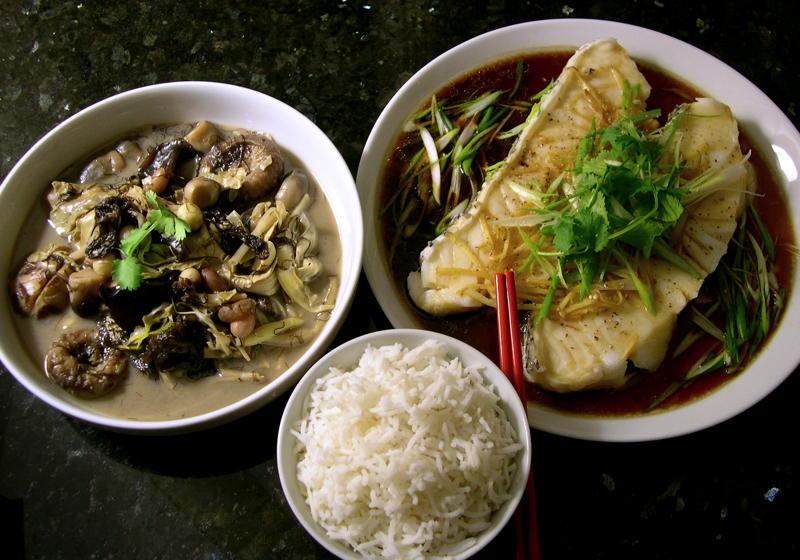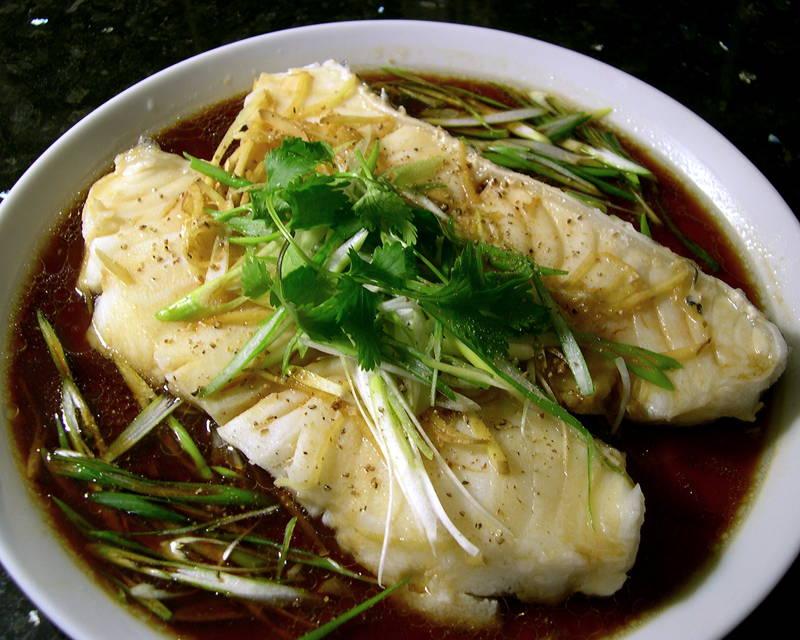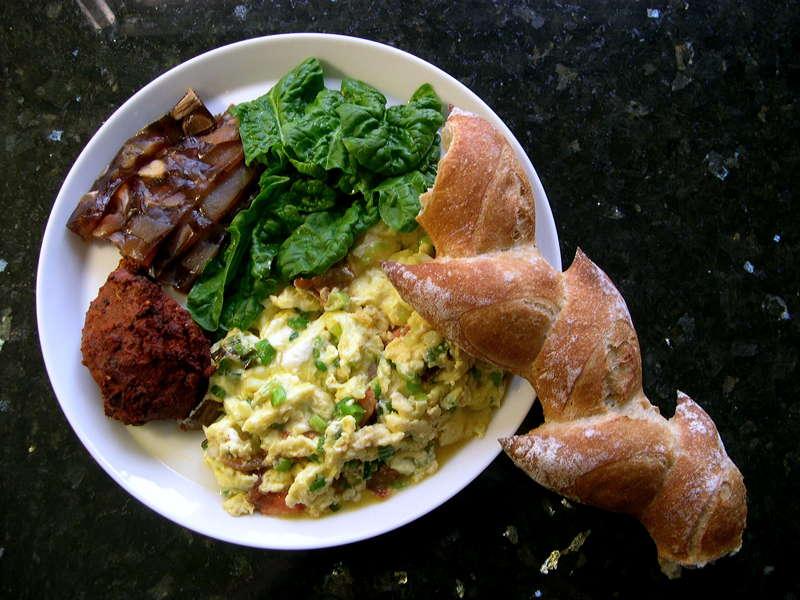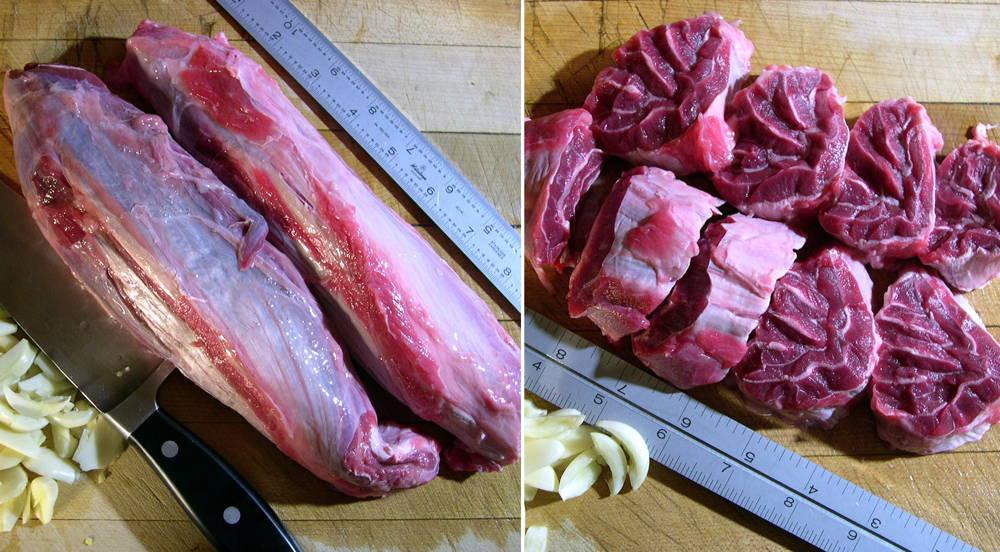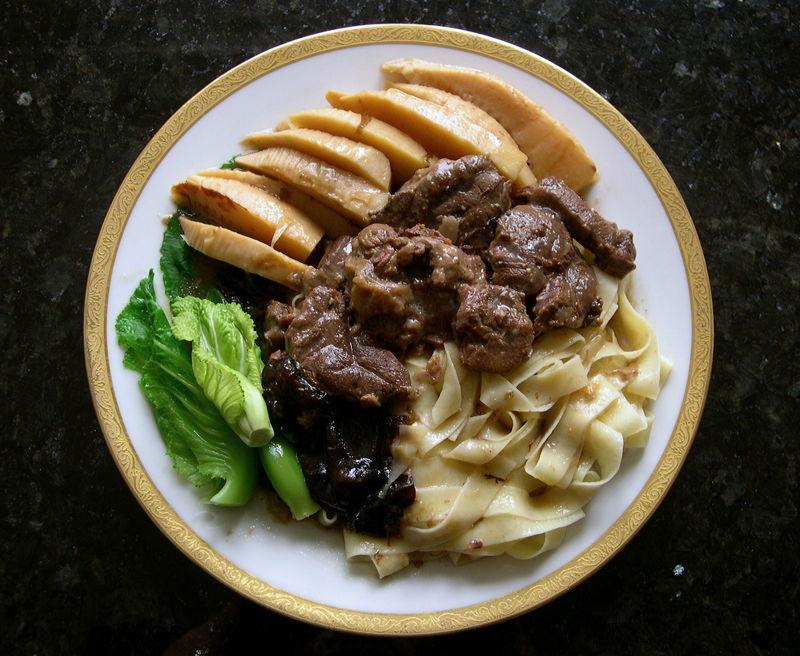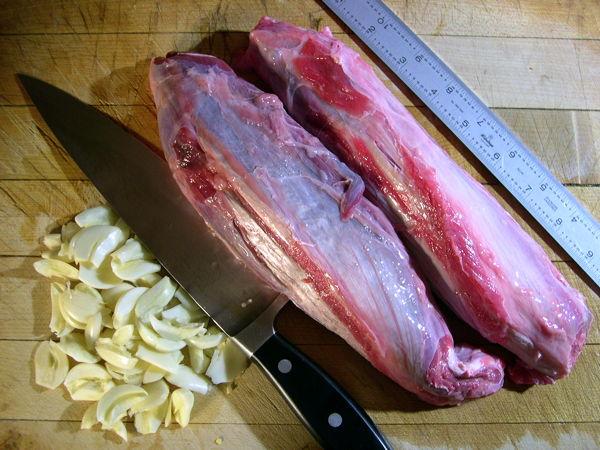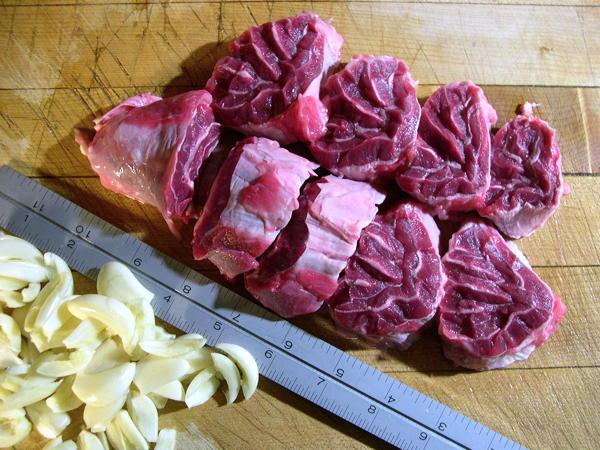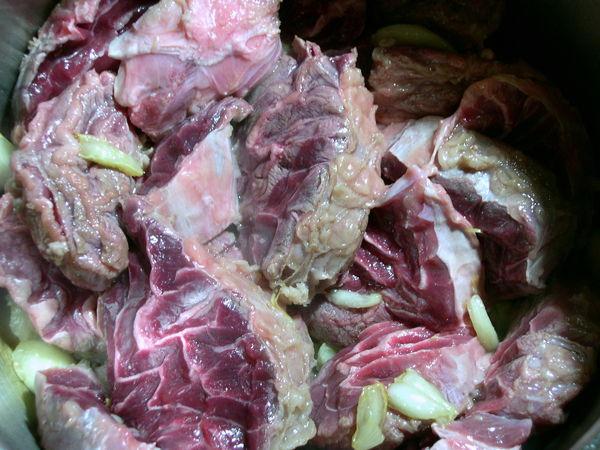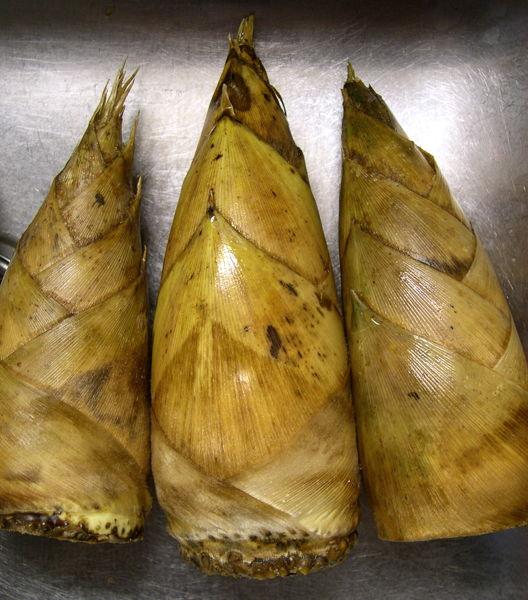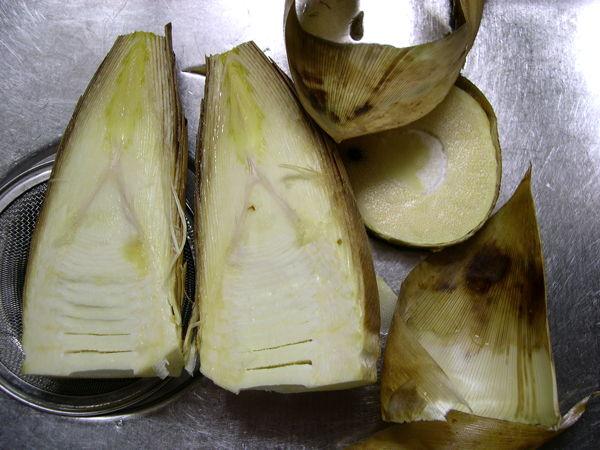-
Posts
3,810 -
Joined
-
Last visited
Content Type
Profiles
Forums
Store
Help Articles
Everything posted by huiray
-
Some recent meals. Fish & tofu soup. Beef, straw mushrooms & young garlic shoots (蒜苗) stir-fry. White rice. Pork spare ribs congee. Chicken & Thai basil in chicken stock soup. Stinky tofu, chopped garlic & garlic shoots stir-fry. White rice. Fuzzy squash & wood-ear fungus in chicken stock soup. Kangkong & fermented tofu stir-fry. Cantonese roast duck [Asia mart]. White rice.
- 487 replies
-
- 13
-

-
Two categories of winners, from the website page from which this is cut-and-pasted: (For other winners please take a look at the website page) Restaurant of the Year, Presented by Illinois Restaurant Association Fat Rice Rising Chef of the Year, Presented by ITW Food Equipment Group (Hobart, Vulcan, Traulsen) Beverly Kim & Johnny Clark: Parachute
-
That looks just beautiful! Do you follow the tradition of tossing it up in the air? Yes. I cleaned up around the plate and wiped off the plate edges before taking the picture. :-)
-
Yesterday, February 14, was Yun Yat (人日), the 7th day of CNY. I celebrated it with Yee Sang (魚生), a.k.a. Lo Hei (撈起)(Cantonese meanings for the characters), the now-traditional dish in the (especially) Malaysian-Chinese & Singaporean-Chinese communities and all other ethnic groups there who join in in the festivities as well. The dish has origins from an old Chaozhou/Teochew dish, brought over by then built on later (reinvented) by the Chinese diaspora. Before tossing: I used sashimi-grade tuna for the raw fish. After putting everything together and tossing.
- 487 replies
-
- 14
-

-
Peanuts are always good. Significance of peanuts. (scroll down) http://www.nationsonline.org/oneworld/Chinese_Customs/food_symbolism.htm Oh, these were very nice and tasty ones too.
-
My CNY 開年餐 (opening the year meal). See here.
-

Indianapolis Restaurant: Reviews & Recommendations
huiray replied to a topic in The Heartland: Dining
Lunch at Lucky Lou today. This served as my 開年餐. ("Opening the Year Meal") Peanuts, "kook-pou" tea (po lei + chrysanthemum flowers). "Choy Kon Tong", 菜幹湯. Dehydrated Cole (bok choy) with pork in a very porky and rich/gelatin-thick broth. Different from how I do it myself. "Keong Chung Loong Har", 薑蔥龍蝦. (ginger-scallion lobster) "Hou Yau Kai Lan", 蠔油芥蘭. (kai-lan w/ oyster sauce). Overview. "Syun Yung Sang Hou", 蒜蓉生蠔. (minced garlic oysters) Had two first, then got a half dozen more. I enjoyed it. Location on Google maps. -
I'd like the "naan-like object" on the right very much. That seems the most eatingess thing there.
-
Just as an aside - for those curious - these wing beans are known in many cuisines ranging from African to large swaths of Asia. See here. My mother (in SE Asia) was very fond of them; I was less so as a youth when growing up, because of the specific taste they had, but I might feel differently today. For a while she grew them in our garden too.
-
A nice Szechuanese rendition of 扣肉. Just curious - have you had, or made, the original Hakka versions of 扣肉? With either preserved greens or with taro?
-
With or without the 飛水 treatment, in your view?
-
For "Chor Yut" (1st day) of CNY I polished off the quasi-vegetarian dish I made here (the chicken stock renders it not really vegetarian) plus the rest of the steamed fish, with rice; then also plus this-and-that plus a big very nice fresh winter spinach [Full Hand Farm] & parsley salad & other stuff dressed w/ Arbosana EV olive oil, Agrodolce white balsamic vinegar (this is quite wonderful, IMO) and fresh ground pepper & Maldon sea salt. (i.e. no cooking) Fresh longans. Ghiradelli & Lindt chocolates. This-and-that alcoholic beverages.
-
Also like with plated dot com. In fact, their Chicago Tribune-sponsored promotion (I'm not going to post that here) places all their emphasis on busy young folks (the underlying suggestion is professional-types) using as the lede-in blurb that you are running late midweek, you pop into the supermarket and grab stuff and then botch dinner with a burnt and tasteless meal. Hey, leave it to them to deliver to you (for a price, of course) preplanned wunnerful meals crafted by chefs etc which you assemble and cook easy-peasy following the instructions. And so on. Much like Blue Apron. On plated dot com's website they have a picture of "Our Team" in which out of 88 folks pictured on that page to me maybe a handful are over the age of 40 and those are all high-level people (and maybe the co-founder). I would peg most of them to be mid-20's to early-30's.
-
• A Cantonese-style CNY dish with some propitious-sounding (in Cantonese) ingredients. Stuff that went in: oil, garlic, fu yee (fermented bean curd), Shaohsing wine, chicken stock, "tea flower mushrooms", peanuts, golden needles (lily flowers), wood-ear fungus, lotus seeds, unpeeled straw mushrooms, supposed "fat choy", bean curd sheets. Water, of course. • Steamed Patagonian Toothfish. Large fillet cut into two; splashed w/ oil, sea salt, Shaohsing wine, ginger, scallions; then steamed. The fish fillets were retrieved, plated on a clean dish & dressed w/ fresh scallions & ginger, a sauce of {hot oil quenched w/ (double-fermented soy sauce, rock sugar, Shaohsing wine, water)} poured over, a sprinkling of ground white pepper. • White rice.
- 487 replies
-
- 11
-

-
Interesting concept, it would've been nice if the article had talked about what McDonald's products he actually used preparing the meal and what he made out of them. Here ya go... http://www.ocregister.com/articles/mcdonald-702796-food-fraser.html http://laist.com/2016/02/05/fool_me_once_ronald.php
-

Differences between Malaysian and Indonesian cuisines
huiray replied to a topic in Food Traditions & Culture
BTW Penang was not a Malay cuisine chain either. It was an amalgam of Malaysian-Chinese and Malaysian-Malay-(Chinese/Indian). :-) -

Differences between Malaysian and Indonesian cuisines
huiray replied to a topic in Food Traditions & Culture
BTW in that old thread one of the posters says that..."In Malaysia the well established culinary traditions of both China and India have to some extent been assimilated into what we think of Malaysian cuisine today. Think of the many Malaysian curries for example - or fried noodles and laksa etc as examples of the Indian and Chinese influences repectively." I think this is incorrect, or at least over-simplistic. I think it more correct to say that "Malaysian Cuisine" is an amalgam of all these disparate cuisines which have absorbed each other's influences into their cuisines. So, for example, it is more like Regional Chinese cuisines (Teochew, Cantonese, Hakka, Hokkien, predominantly) absorbing and incorporating MALAY influences and spices into themselves – rather than either Malay or "Malaysian" cuisine absorbing Chinese influences.¶¶ (Or one of the regional Chinese cuisines absorbing Southern Indian - Tamilian, or Keralan, for example - influences) There is a distinct difference between the two ways of saying it. The Wikipedia article I cited above in my first post here actually is a decent summary of the cuisine. The poster also ignored the influence of the colonial eras (both Portuguese and British) and both the Eurasian and "Colonial Hainanese" cuisines/dishes that resulted. "Hainanese Pork Chop", for example, is probably found nowhere else besides Malaysia (and Singapore) - deriving from when British colonialists employed cooks who happened to be Hainanese in their kitchens,** and these cooks adapted the ways and demands of their British/English employers to what they knew. Look up Hainanese Pork Chop, one might find it interesting. The Portuguese influence is frequently more pronounced in the Malaccan regions (NOT Moluccan - a completely different geographical place) and Eurasian Cuisine is a recognized sub-category in Malaysian Cuisine. ** The Hainanese were the last (in a general sense) of the regional folks from China to get to Malaysia/Singapore. Most of the regional/dialect-specific groups from China tended to cluster in certain industries or lines of work; and by the time the Hainanese arrived, cooking for others was one of the last things left for them to do if they could not establish themselves independently. ETA: ¶¶ Of course the flow goes both ways - Malays also adopt some of the styles and character of Chinese/Indian etc cuisines, but with "halal" requirements and their own taste preferences coming into play. "Hainanese Chicken Rice" is much loved by the Malays, for example, but they put their spin on it and make the chicken into a ROASTED chicken. (Malays hate "rubbery" skin, in general, which normal HCR would have) -

Differences between Malaysian and Indonesian cuisines
huiray replied to a topic in Food Traditions & Culture
@KennethT, I followed your link for Sanuria and went to the "Street View" on Google. The view shows the awning with Chinese ideograms on it which (on the left) is more-or-less an onomatopoeia for "Sanuria" and on the right says "small eats shop/stall" = smaller-scale restaurant. I would say this pegs the owners as of Chinese ethnicity or heritage. I doubt any ethnic-Malay-owned shop would put Chinese ideograms on their frontage, except in special circumstances. I also looked around and found this: http://www.menupages.com/restaurants/sanur/menu If this indeed looks like what you also were looking at then I would say most of the stuff on offer is Malaysian-Chinese cuisine, plus standard Malay-type dishes as interpreted by Malaysian Chinese folks. I would not peg it as a "Malay cuisine" place. The "Indonesian" stuff I would speculate would be sort-of similar dishes as found in "Indonesia", interpreted through the owner's lens. There may be some Nyonya-type influences too. I plugged in "malay restaurant" into a google map search and got this: https://www.google.com/maps/search/malay+restaurant/@40.7052248,-74.0494413,12z/data=!3m1!4b1 Laut - my understanding was that when it first opened years ago it was much more attuned to Malay cuisine ( @Pan, can you confirm or deny this, please?) but when I look at the menu now it looks like a HUGE mash-up between Malaysian-Chinese, sort-of Thai, sort-of Malay, plus this-and-that. The "Nyonya" restaurants do serve Nyonya-derived if not always true Nyonya dishes plus the usual mash-ups for a restaurant of this sort in a Western place. Most of the others (if not all) seem to hew more to Malaysian-Chinese cuisine than not. (p.s.: Hainanese Chicken Rice is NOT a Nyonya dish even if it is offered in the "Nyonya" restaurants in NYC.) Just as an aside: If one walks into a Malay house, or an actual Malay restaurant, there is often what can only be described as a "Malay smell". I suppose this might be interpreted as somewhat...umm...politically incorrect, but folks who grew up around those parts "know" what is meant here. -

Differences between Malaysian and Indonesian cuisines
huiray replied to a topic in Food Traditions & Culture
When you say "Malaysian (cuisine)" do you really mean "Malaysian Cuisine" or do you mean "MALAY cuisine"? When you say "Indonesian (cuisine)" do you mean pan-Indonesian Cuisine or any particular subset of it? Keep in mind, as one example, that even Peranakan cuisine is both Malaysian and Indonesian because it exists in both countries. If you mean MALAY cuisine vs the dominant generalized kind of cuisine found in Indonesia then many of the regionalities are subsets of a broad spectrum, yes - with dishes that are common to both Malay cuisine and Javanese or Sumatran cuisine &etc, say (rendang being one example - with Minangkabau origins), but perhaps with different spicing and/or way of preparation. "Nasi Goreng" (literally, "fried rice") is another dish that is ubiquitous in both countries overlapping both Malay (and even Malaysian-Chinese and Malaysian-Indian and Mamak & etc, to a point) cuisines as well as Sumatran/Javanese/Padang/etcetc cuisines but is frequently thought of in the West as "Indonesian". Here's an old thread here on eG on nasi goreng. There are also various food items in Java, especially, which look like clunky versions of "siu mai" or "wonton" but are called by Malay/Indonesian(as a language) names --- but that's because they ARE the local Chinese (Hakka, mainly) versions of same. "Fried chicken" can be done in various ways and will differ accouding to which ethnic or regional group is doing it, across Malaysia and Indonesia. Balinese cuisine (as a subset of Indonesian) has strong Hindu influences and includes a popular Balinese rendition of roast PIG which, of course, would be verboten in most of otherwise majority Muslim Indonesia. And so on. (Take a long look at the many threads on eating in Indonesia (vs eating in Malaysia) especially those posted by a certain once-poster on another forum for lots of details on a personal level) What was this restaurant you went to, and what was on their menu? Who were the owners? (ethnic Malay, or ethnic Chinese, or some other?) -
Spicy hot pork cheek tasso [Love Handle], beef tendon terrine [Love Handle], fresh winter spinach [Full Hand Farm, IWFM], part of an epi loaf [Brotgarten, IWFM]. Free-form eggs w/ scallions, rice bran oil & Kumato tomatoes, left "wet" when cooked in a hot pan. [Host's note: this topic is part of an extended discussion which periodically needs to be split to ease the load on our servers. The discussion continues here.]
-
http://www.eater.com/2016/2/4/10919356/top-chef-neal-fraser-sold-out-to-mcdonalds-wtf This brought a big, wide smile to my face. IMO the writer of the article shows his high-falutin' horror at the notion that McDonald's ingredients might actually be edible much more than anything duplicitous that Neal Fraser may have done that he was ostensibly decrying.
-
Here are two beef shins I used for a braise w/ bamboo shoots & stuff: The shins a.k.a. boneless shanks came from my usual Chinese grocery. I did, in fact, unintentionally leave the braise (stove-top) going for longer than I intended this time - about 3+ hours --- and all the shin rounds were well along in disintegrating into bits and pieces. See here (in the dinner topic) for more details on the dish.
-
Beef shin braised w/ bamboo shoots & stuff. Beef shins cut into rounds, tossed in pot w/ lots of garlic & enough oil. Slurry of mutenka shiro miso added, "sauté" a bit, water added, simmered. Sliced pre-treated** fresh bamboo shoots added, simmering continued; fresh wood-ear fungus also went in, simmer some more. Seasoning adjusted. Left it cooking for longer than intended, about 3+ hours. The shin rounds were disintegrating and some care was needed to extract partially-intact rounds. Plated w/ the bamboo slices, some of the fungus, blanched kai choy hearts (large-leaved mustard) and egg noodles¶¶ with the sauce/braising liquid drizzled over everything. ** Fresh bamboo shoots cut into halves, bracts and other harder/unwanted stuff peeled off/cut off, sliced up, simmered in salted water for about 3/4 hr then drained and rinsed w/ fresh water. The heat treatment removes cyanogenic glycosides. ¶¶I used Cipriani tagliarelle cooked per the instructions. On the way there: Beef shins (plus peeled lightly crushed garlic), whole and cut into rounds. Shin rounds in pot w/ garlic & oil. Bamboo shoots whole and one of them halved.
-
Thanks to all who posted follow-ups and words of encouragement. Appreciated.
-
Oh, is that so? Your address, please. But that invites discussions about all sorts of stuff, some politically incorrect, some uncomfortable to certain folks. Look, I am not a rich person - I merely happen to live in an area where I can get a lot of nice stuff. But it seems that some folks here resent reading about such stuff and prefer that NO ONE talk about such stuff because they can't get to it in the off-season where they are. Please look at the stuff here simply as "some things I got". Best Regards, huiray.


